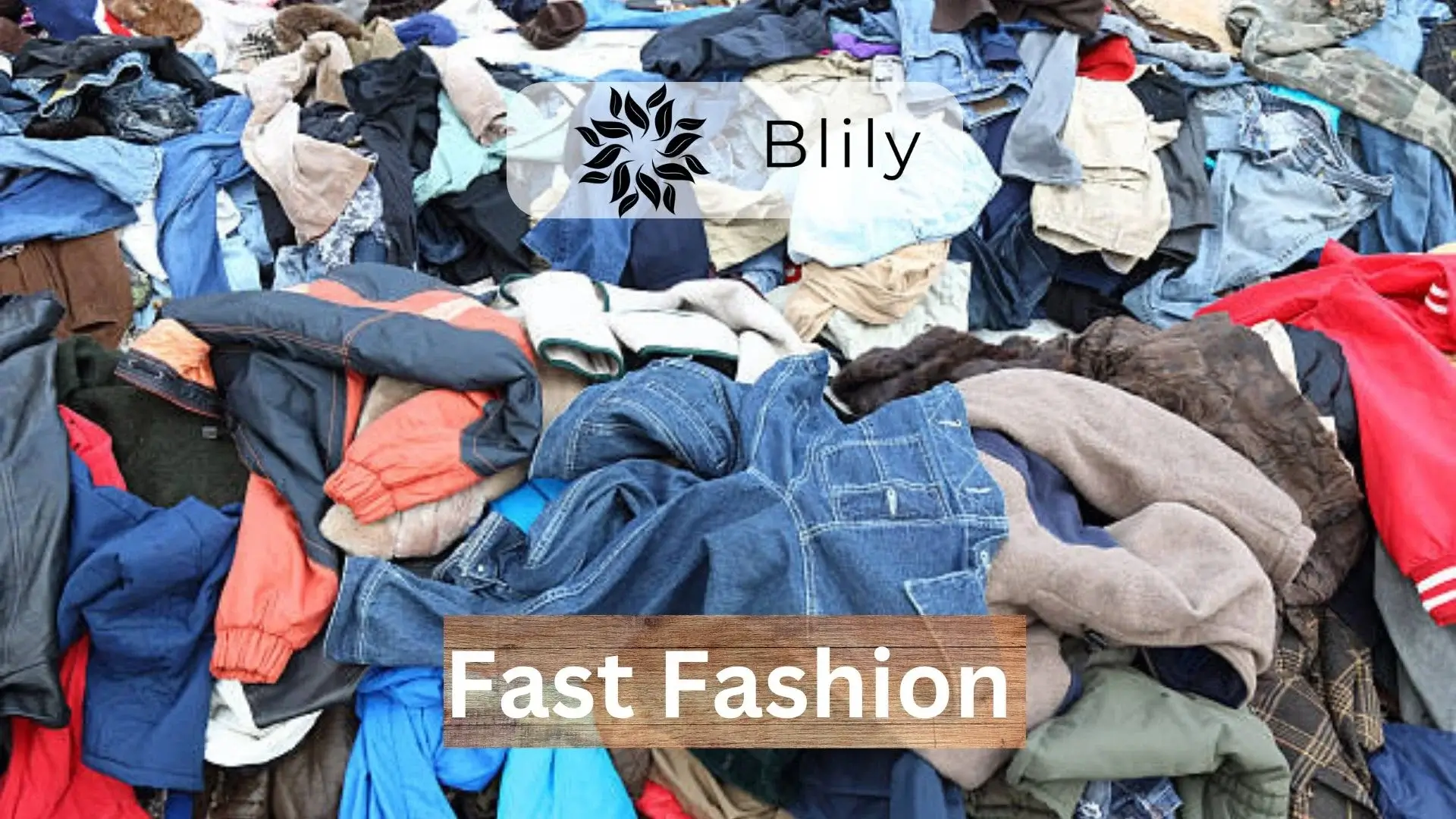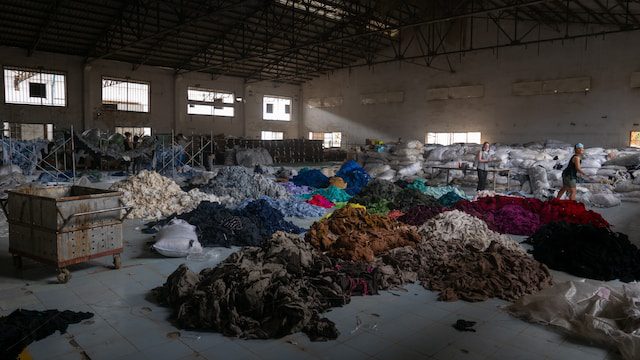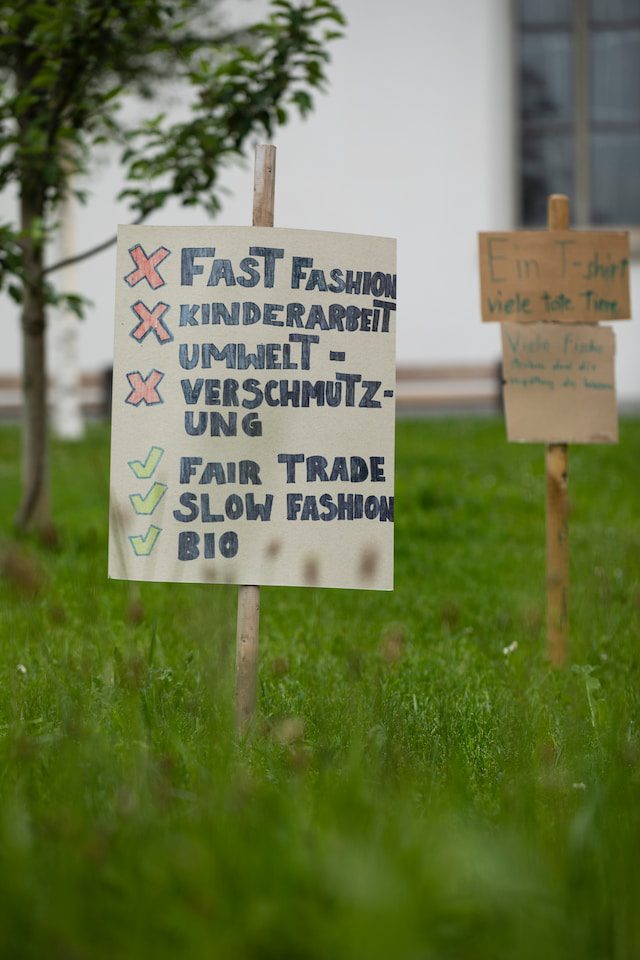Tanace Organics Pvt. Ltd

How Fast Fashion is Destroying the Planet -The Dark Side of Fashion
Table of Contents
I. Introduction
– A. The allure of fast fashion
Fast fashion holds a strong allure for consumers due to its ability to offer trendy clothing at affordable prices. It allows people to keep up with the latest fashion trends without emptying their wallets. With fast fashion, individuals can express their personal style and experiment with different looks without breaking the bank.
– B. The environmental cost of fast fashion
Despite its appeal, fast fashion comes with a significant environmental cost. The rapid production and consumption cycles of fast fashion contribute to the depletion of natural resources, pollution, and greenhouse gas emissions. The industry’s reliance on cheap labor, synthetic materials, and unsustainable production practices has led to ecological damage and poses a threat to the planet’s well-being.
– C. Purpose of the article
The purpose of this article is to raise awareness about the environmental impact of fast fashion and encourage readers to make more conscious fashion choices. By understanding the negative consequences of fast fashion, we can strive towards a more sustainable and ethical fashion industry. The article aims to empower readers with knowledge and inspire them to support sustainable fashion practices for the benefit of both the environment and future generations.
II. Understanding Fast Fashion
– A. Definition of fast fashion
Fast fashion refers to a business model and production approach in the fashion industry that focuses on quickly producing inexpensive clothing in response to the latest fashion trends. It involves rapid design, manufacturing, and distribution processes, aiming to provide affordable, on-trend garments that capture consumer attention. Fast fashion brands often prioritize speed and cost-efficiency over sustainability and ethical considerations.
– B. Rise of fast fashion brands
Fast fashion brands have experienced a significant rise in popularity over the past few decades. Companies like Zara, H&M, and Forever 21 have revolutionized the industry by introducing a new approach to fashion retail. They have successfully implemented strategies such as shorter production cycles, efficient supply chains, and frequent product turnover to meet the demands of fashion-conscious consumers seeking affordable and trendy clothing options.
– C. Consumer demand and its impact
Consumer demand plays a pivotal role in the growth of fast fashion. The desire for affordable, up-to-date fashion drives the success of fast fashion brands. Consumers are attracted to the quick availability of trendy garments at low prices, allowing them to continuously update their wardrobes in line with the latest fashion trends. However, this demand also contributes to the high consumption of resources, increased waste generation, and exploitative labor practices associated with the fast fashion industry.
III. The Environmental Impact of Fast Fashion

– A. Excessive water consumption in textile production
Fast fashion heavily relies on water throughout the textile production process, from growing raw materials like cotton to dyeing and finishing fabrics. The industry’s high demand for water contributes to water scarcity in regions where garments are produced, putting a strain on local communities and ecosystems. Additionally, water pollution occurs when untreated wastewater containing chemicals and dyes is discharged into waterways, further degrading the environment.
– B. Chemical pollution and textile dyeing
Textile dyeing is a significant contributor to chemical pollution in the fast fashion industry. The dyes and chemicals used in the dyeing process often contain toxic substances that are released into water sources, causing harm to aquatic life and potentially entering the food chain. The improper disposal of chemical waste from dyeing processes also poses a risk to the environment and human health.
– C. Carbon emissions and greenhouse gases
Fast fashion’s carbon footprint is substantial due to multiple factors. The production and transportation of garments require significant energy consumption, predominantly derived from fossil fuels. Additionally, the synthetic fibers commonly used in fast fashion, such as polyester, are derived from non-renewable resources and emit greenhouse gases during production and decomposition. These factors contribute to climate change and its associated environmental impacts.
– D. Waste generation and landfill crisis
Fast fashion’s rapid production cycles and disposable nature contribute to enormous amounts of textile waste. Garments are often discarded quickly as trends change, leading to overflowing landfills. Many textiles are made from synthetic materials that do not biodegrade easily, further exacerbating the waste problem. Additionally, the production of these garments generates waste at various stages, including fabric scraps and unsold inventory, adding to the overall environmental impact.
IV. Effects on Biodiversity and Ecosystems
– A. Deforestation and habitat destruction
Fast fashion contributes to deforestation through the production of materials like cotton and cellulose fibers (e.g., rayon and viscose). Forests are cleared to make way for cotton plantations or to harvest trees used in the production of cellulose-based fabrics. This loss of forested areas disrupts ecosystems, destroys habitats for various plant and animal species, and threatens biodiversity.
– B. Pesticide use and water pollution
Cotton, one of the most commonly used materials in fast fashion, requires extensive pesticide use. These chemicals have adverse effects on the environment, including water pollution. Pesticides used in cotton farming can contaminate water sources, harming aquatic life and affecting the overall ecological balance. Moreover, pesticide residues can persist in soils and affect surrounding ecosystems.
– C. Disruption of natural ecosystems
The fast fashion industry’s demand for materials leads to the disruption of natural ecosystems beyond deforestation. Ecosystems like wetlands, grasslands, and rivers can be damaged or altered due to the extraction of resources used in clothing production. This disruption affects the delicate balance of these ecosystems, potentially leading to the loss of biodiversity and ecosystem services they provide.
V. Fashion Waste and Recycling
– A. Growth of textile waste
The fast fashion industry’s rapid production and consumer-driven demand contribute to a significant growth in textile waste. Clothing items are discarded more quickly, leading to overflowing landfills. The rise of “throwaway” culture, where garments are seen as disposable, exacerbates this issue. As a result, textile waste poses a significant environmental challenge that needs to be addressed.
– B. Challenges in textile recycling
Textile recycling faces several challenges. Firstly, many garments are made from blended fabrics or contain non-recyclable components, making it difficult to separate and recycle them effectively. Additionally, the lack of convenient and accessible textile recycling infrastructure further hampers recycling efforts. Sorting, processing, and reusing textile waste require advanced technologies and investment, which can be a barrier to widespread implementation.
– C. Sustainable alternatives and circular fashion
To combat fashion waste, sustainable alternatives and circular fashion principles are gaining prominence. Sustainable fashion brands are adopting practices such as designing durable and timeless pieces, using eco-friendly materials, and implementing take-back programs to encourage garment recycling. Circular fashion aims to close the loop by promoting recycling, upcycling, and repurposing of textiles, reducing the need for virgin resources and minimizing waste generation.
VI. Consumer Awareness and Changing Trends

– A. Rise of conscious consumerism
In recent years, there has been a significant rise in conscious consumerism, where individuals are increasingly aware of the environmental and social impacts of their purchasing decisions. Consumers are becoming more informed about the fast fashion industry’s negative effects and are actively seeking alternatives that align with their values. This shift in consumer mindset has led to a demand for more sustainable, ethical, and transparent practices within the fashion industry.
– B. Slow fashion and sustainable brands
Slow fashion is an emerging trend that encourages a more mindful and sustainable approach to clothing consumption. It emphasizes quality over quantity, prioritizing timeless designs, durability, and ethical production practices. Sustainable brands, often associated with slow fashion, focus on environmentally friendly materials, fair labor conditions, and transparent supply chains. These brands offer alternatives to fast fashion, providing consumers with conscious and sustainable choices.
– C. Ethical considerations in purchasing decisions
Consumers are increasingly considering ethical factors when making purchasing decisions. They take into account the working conditions of garment workers, the use of sustainable materials, fair trade practices, and the overall social and environmental impact of the brands they support. Ethical considerations also extend to factors such as animal welfare, promoting diversity and inclusivity, and supporting local and artisanal craftsmanship.
VIl. Case Studies: The Fashion Industry’s Impact

– A. Water pollution in textile manufacturing hubs
Textile manufacturing hubs, particularly in countries like Bangladesh, India, and China, face significant challenges related to water pollution. The discharge of untreated wastewater from textile factories containing harmful chemicals and dyes contributes to the contamination of local water sources. This pollution not only affects the environment but also poses health risks to nearby communities and ecosystems.
– B. Garment production and carbon emissions
The garment production process, including raw material extraction, manufacturing, transportation, and retail, contributes to carbon emissions. The fast fashion industry’s reliance on fossil fuels and energy-intensive processes increases its carbon footprint. For example, the transportation of garments from production facilities to stores or consumers often involves long distances, contributing to greenhouse gas emissions and climate change.
– C. Worker exploitation and human rights violations
The fashion industry has been marred by instances of worker exploitation and human rights violations, particularly in low-wage countries where labor regulations may be lax or poorly enforced. Workers, often in garment factories, may experience unsafe working conditions, long working hours, inadequate pay, and limited access to labor rights. This exploitation undermines the well-being and dignity of the individuals involved.
VIll. Solutions and Recommendations
– A. Educating consumers and raising awareness
One key solution is to educate consumers about the environmental and social impact of fast fashion. By raising awareness through campaigns, social media, and educational programs, consumers can make more informed choices. Understanding the consequences of their fashion choices empowers individuals to prioritize sustainability and ethical considerations when making purchasing decisions.
– B. Supporting sustainable and ethical fashion brands
Supporting sustainable and ethical fashion brands is a powerful way to drive positive change. By choosing to purchase from brands that prioritize environmentally friendly practices, fair labor conditions, and transparency, consumers can contribute to a more responsible fashion industry. This support incentivizes brands to continue and expand their sustainable efforts.
– C. Promoting responsible consumption and conscious buying habits
Encouraging responsible consumption is crucial in reducing the environmental impact of fast fashion. Consumers can adopt conscious buying habits such as buying fewer items, investing in high-quality and durable clothing, and embracing timeless styles. Additionally, consumers can explore second-hand and vintage shopping, clothing rental services, and clothing swaps as alternatives to purchasing new items, thereby extending the lifespan of garments.
lX. Conclusion
– A. Recap of the environmental and social impacts
Fast fashion has had significant environmental and social impacts. From excessive water consumption and chemical pollution in textile production to carbon emissions, waste generation, and worker exploitation, the negative consequences are widespread. The fashion industry’s practices have contributed to deforestation, habitat destruction, water pollution, and a growing waste crisis, jeopardizing ecosystems and biodiversity.
– B. Urgency for change and individual responsibility
The urgency for change in the fashion industry cannot be overstated. As consumers, we hold the power to drive this change through our purchasing choices and demand for sustainable and ethical practices. By educating ourselves, supporting responsible brands, and adopting conscious buying habits, we can contribute to a more sustainable fashion industry.
Individual responsibility is crucial because collective action is needed to create a significant impact. By choosing quality over quantity, extending the lifespan of our clothing, and promoting a circular fashion model, we can reduce waste and minimize our environmental footprint. Additionally, by advocating for transparency, fair labor conditions, and sustainable practices, we can encourage brands and policymakers to prioritize social and environmental responsibility.
In conclusion, the allure of fast fashion comes at a high environmental and social cost. However, by understanding the impacts, raising awareness, supporting sustainable alternatives, and embracing responsible consumption, we can pave the way for a more sustainable and ethical fashion industry. Let us strive for a future where fashion not only reflects our style but also respects our planet and the people who make our clothes.
X. Frequently Asked Questions (FAQs)
– A. What is fast fashion?

Fast fashion refers to the production and consumption of inexpensive, trendy clothing that is quickly produced and designed to be short-lived. It involves rapid production cycles, often with low-quality materials and exploitative labor practices, resulting in affordable but disposable fashion.
– B. How does fast fashion contribute to climate change?
Fast fashion contributes to climate change in various ways. The production and transportation of garments require significant amounts of energy, primarily derived from fossil fuels. Additionally, the use of synthetic fibers, such as polyester, in fast fashion releases greenhouse gases during production and contributes to the growing problem of textile waste, which releases harmful emissions when incinerated.
– C. What are the alternatives to fast fashion?
There are several alternatives to fast fashion. Sustainable and ethical fashion brands prioritize environmental and social responsibility, using eco-friendly materials, promoting fair labor practices, and adopting transparent supply chains. Slow fashion encourages mindful consumption by focusing on quality, durability, and timeless designs. Thrift shopping, clothing swaps, and renting clothes are also sustainable alternatives that reduce the demand for new garments.
– D. Can consumers make a difference in the fashion industry?
Absolutely! Consumers play a crucial role in shaping the fashion industry. By making conscious choices, supporting sustainable brands, and demanding transparency and ethical practices, consumers can drive change. Through responsible consumption, spreading awareness, and advocating for more sustainable options, consumers can push the fashion industry towards a more environmentally and socially responsible future. Collectively, consumer actions can influence industry practices, encourage innovation, and create a demand for sustainable fashion.







